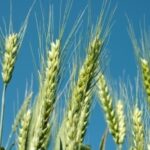Gluten intolerance and celiac disease is no longer a hidden problem. Just a few years ago, Americans hadn’t heard much about gluten intolerance, gluten sensitivities or celiac disease. Few doctors tested for it, and patients went undiagnosed and left in confusion and pain. My daughter was not one of those patients. Thanks to an alert physician, Cassie had tests that proved she had markers for celiac disease.
A few years later, I began having a series of symptoms that led me to the doctor. What he determined was that my various problems, such as hives, stemmed from my diet. After a while it seemed everything I ate caused me problems from hives and face swelling, to breathing problems and all night sessions in the bathroom when I just wanted to die.
I lost weight, and worried my family. Little by little as I eliminated and tested food, I discovered the source of my problems. They includes peanuts and tree nuts, tomato, citrus and most other fruits-especially strawberries. Most of all, I began to realize I shared something with my daughter-an intolerance for anything containing wheat, barley or rye. I had a gluten intolerance.
Gluten is a protein found in wheat, barley and rye. But as producers found, gluten has a very important property. It is a glue-like substance that acts as a binder. Because of this property, gluten is now used in all sorts of commercial products that are quite divorced from wheat, barley and rye. And celiac disease is on the rise.
Those with celiac disease or gluten intolerance often have no idea what is making them sick and what has them groaning in pain after eating what may even appear to be a healthy meal. Who would ever think that whole grain wheat bread could be so deadly.
Doctors in America are only now beginning to understand the connection between certain symptoms celiac disease and gluten sensitivities. Instead, those with celiac disease or a gluten intolerance may be diagnosed with Irritable Bowel syndrome (IBS) or some other malady more in tune with the physician’s training.
That often leaves those with celiac disease or gluten intolerance having to discover the root of their problems on their own and insist on the appropriate blood tests.
As for me, it took about three years to figure out all the things that were making me sick. The most difficult was the gluten intolerance because gluten products are so widely used and wheat derivatives are found in unexpected places. Check labels. You’ll be shocked at how many products contain wheat or gluten.
In one restaurant I can’t eat the butter because gluten has been added to it. In another, I can’t eat eggs, because wheat flour has been added to make the eggs more fluffy. Other restaurants dust steaks in wheat flour before grilling them. When I began my journey, going out to eat was pretty much a crap shoot. Not knowing if I would end up in pain after an outing that included restaurant food, rather sucked the fun from eating out. I still eat out with some trepidation.
Gluten free foods weren’t a lot better. Many tasted dreadful. But things are very different now and getting better all the time. Many restaurants publish gluten free menus on line and many managers (when asked ahead of time) are very helpful in explaining what is safe to eat for those with celiac disease or gluten or other sensitivities or intolerances.
More and more gluten free foods are available for those with celiac disease or gluten intolerance. (By the way, wheat-free isn’t necessarily gluten-free. The product could still contain barley or rye.) More and more gluten free foods are just as tasty as their gluten laden counterparts. (Betty Crocker is even offering gluten free cake mixes.) Better labeling also helps those with gluten problems to stay safe.
At home, I keep wheat, barley and rye foods separated from gluten free foods. (Cross contamination is always a problem if a gluten food comes in contact with a gluten free food.)
I’ve found cheap tin pans an easy way to cook, because I can easily keep foods separated in the oven. The added bonus of tin pan is that at the end of meal preparation I simply throw away the pans. I don’t have to worry about washing pans filled with gluten or cross contamination.
At restaurants, I check menus online, call ahead of time and make sure the waitress understands my need for a completely gluten free meal. (Being uncomfortable is worth not spending the night in pain.) I also pass up buffet style meals because of the high probability of cross contamination.
At church/community get-togethers or parties, I bring gluten free choices-and label them as such.
I read information in books and online. Two books I’ve found especially helpful and enlightening are The G Free Diet by Elisabeth Hasselbeck and The Complete Idiot’s Guide To Gliten-Free Eating by Eve Adamson and Tricia Thompson, MS, RD.
Most of all, as someone with a daughter with celiac disease and with my own gluten intolerance issues, I’ve learn to always stay vigilant and say, “No.” with a smile.
Resources:
Personal Experience
Doctor & Allergist
The G Free Diet by Elisabeth Hasselbeck
The Complete Idiot’s Guide To Gliten-Free Eating by Eve Adamson and Tricia Thompson, MS, RD.




